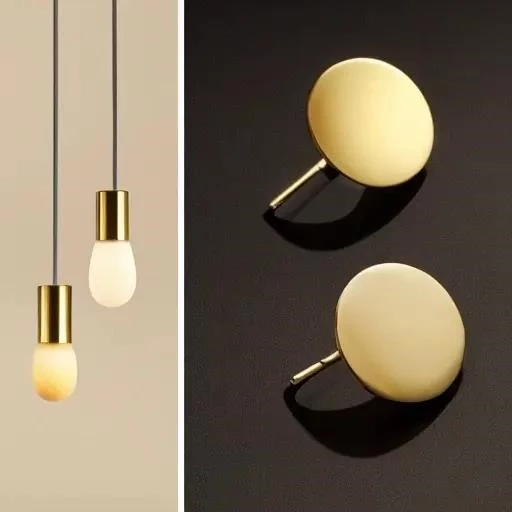For millennia, gold has captivated humanity, a timeless symbol of wealth, power, and enduring beauty․ From ancient pharaohs adorning themselves in opulent finery to modern investors seeking a tangible hedge against economic volatility, its allure remains unchallenged․ But what if the very adornments we cherish could also serve as astute financial instruments? This isn’t about mere sentimental value; it’s about a sophisticated approach to wealth building, blending the aesthetic pleasure of owning exquisite pieces with the strategic foresight of a seasoned investor․ The secret, often overlooked, lies in discerning precisely which gold jewelry for investment truly holds its value and promises appreciation, transforming personal adornment into a potent portfolio asset․
The allure of gold jewelry extends beyond mere adornment; it whispers tales of ancient empires, personal milestones, and enduring value․ However, distinguishing between a lavish expenditure and a savvy investment requires a keen understanding of the market’s subtle intricacies․ Unlike a gold bar whose value is determined almost purely by its weight and purity, jewelry pieces carry premiums for design, craftsmanship, and brand, which often complicate their investment viability․ Our exploration will meticulously dissect these components, guiding you toward selections that promise not only visual splendor but also a resilient financial foundation․
| Investment Characteristic | Description | Investment Impact |
|---|---|---|
| Gold Purity (Karat) | Refers to the proportion of pure gold in an alloy․ 24K is 99․9% pure, 18K is 75%, 14K is 58․3%, etc․ | Crucial: Higher karat (ideally 22K or 24K) means more gold content by weight, aligning closer to bullion value․ Lower karats have significantly less investment potential due to higher alloy content․ |
| Weight (Gram/Troy Ounce) | The total mass of the gold in the jewelry piece․ | Fundamental: Heavier pieces contain more gold, directly impacting their intrinsic melt value․ Prioritize substantial, solid pieces over delicate, hollow designs for better investment returns․ |
| Craftsmanship & Design Premium | The added cost for labor, artistic design, brand name, and marketing beyond the raw material cost․ | Detrimental for pure investment: While beautiful, high design premiums rarely hold their value over time and are difficult to recoup upon resale․ Seek simpler, classic designs where the gold itself is the primary value driver․ |
| Gemstones & Diamonds | Any precious or semi-precious stones embedded within the gold setting․ | Generally negative: Unless the stones are exceptionally rare, large, certified, and of investment-grade quality (e․g․, specific high-carat diamonds), they add significant cost but often little to no resale value in the general jewelry market․ They can even make melting the gold more complex and costly․ |
| Liquidity & Resale Market | How easily and quickly the item can be sold for its intrinsic value․ | Important: Unlike bullion, selling jewelry for its gold content often involves finding a buyer willing to pay near melt value, or a specialized reseller for unique pieces․ The market for investment-grade jewelry is smaller and more specialized than for bullion․ |
| Provenance & Rarity | The history of ownership, origin, and unique characteristics of a piece․ | Niche Value: For exceptionally rare, antique, or historically significant pieces, provenance can add substantial value beyond melt weight, appealing to collectors․ This is a specialized market and not typical for most investment jewelry․ |
| Certification | Documentation verifying the gold’s purity and weight from a reputable third party․ | Beneficial: While less common for jewelry than bullion, reputable jewelers providing clear assays or certifications can add confidence in the stated gold content, aiding future resale․ |
| Reference: World Gold Council ⎯ How Gold is Measured | ||
The Golden Standard: Purity and Weight Reign Supreme
When considering gold jewelry for investment, the primary factors to meticulously scrutinize are purity and weight, unequivocally․ Investment-grade gold, whether in bullion or jewelry, must possess the highest possible karatage․ We’re talking 22K or, ideally, 24K, which signifies 91․6% and 99․9% pure gold, respectively․ Lower karats, such as 18K or 14K, contain significant proportions of other metals like copper or silver, thereby diluting the intrinsic gold value and making them less attractive from a purely investment standpoint․
A substantial, solid gold chain or bracelet, for instance, crafted from high-karat gold, will invariably hold its value far better than a delicately intricate 14K pendant adorned with numerous small, uncertified diamonds․ The melt value, representing the gold’s weight multiplied by its purity and current market price, is the bedrock of its investment potential․
Industry experts consistently echo this sentiment․ “For true investment potential in jewelry, focus relentlessly on the gold content itself,” advises renowned precious metals analyst, Dr․ Eleanor Vance․ “Any premium paid for intricate design or brand prestige is almost always lost the moment you leave the store․ You want pieces where the vast majority of the cost is directly attributable to the raw material’s inherent value․” This principle underscores a fundamental divergence from purchasing jewelry for fashion: investment demands practicality over fleeting trends․
Navigating the Nuances: Craftsmanship, Liquidity, and Hidden Costs
Beyond purity and weight, astute investors must critically assess craftsmanship and liquidity․ While exquisite artistry is undeniably appealing, it often inflates the initial purchase price significantly beyond the gold’s melt value․ This “craftsmanship premium” is incredibly difficult to recoup, as the secondary market for designer jewelry is highly specialized and often depreciates rapidly unless the piece is a rare, historically significant artifact․ Consequently, simpler, more classic designs — think solid gold bangles, plain necklaces, or heavy chains — tend to be superior investment choices because their value is predominantly tied to their gold content rather than ephemeral design trends․ These items are also generally easier to liquidate, appealing to a broader range of buyers, including jewelers willing to purchase for melt value․
Moreover, the presence of gemstones, particularly diamonds, introduces a complex layer․ Unless the stones are of exceptional quality, size, and accompanied by reputable certifications (like GIA or AGS), they typically add minimal to no resale value for the average investor․ In fact, their inclusion can sometimes complicate the process of assaying or melting the gold, potentially incurring additional costs․ Smart investors understand that while a dazzling diamond might enhance aesthetic appeal, it rarely enhances the investment profile of gold jewelry․ Carefully consider pieces that are pure gold or feature only minor, easily removable accents․
The Future of Your Fortune: Strategic Acquisition and Market Awareness
Acquiring gold jewelry for investment demands a forward-looking perspective and a keen awareness of market dynamics․ Purchasing from reputable dealers who provide clear assays and transparent pricing is paramount․ Always compare the asking price against the current spot price of gold, calculating the percentage premium you are paying above the melt value․ A lower premium indicates a more sound investment․ Furthermore, consider the potential for future appreciation in the underlying gold commodity itself․ Gold has historically served as a robust inflation hedge and a safe haven during economic instability, offering a compelling argument for its inclusion in a diversified portfolio․
By integrating insights from economic forecasts and understanding global demand trends, investors can strategically time their acquisitions․ Imagine, for example, a period of heightened geopolitical uncertainty or rampant inflation; these are precisely the conditions under which gold typically shines, its value often soaring․ Investing in tangible assets like high-karat gold jewelry provides a comforting sense of security, a physical manifestation of wealth that is immune to cybersecurity breaches or abstract market fluctuations․ It’s a remarkably effective strategy for those seeking both tangible beauty and robust financial resilience․
The journey into gold jewelry for investment is not for the impulsive buyer but for the informed, patient investor․ By prioritizing purity, weight, and simplicity of design, and by meticulously avoiding excessive craftsmanship premiums or non-investment-grade gemstones, you can transform what many consider a mere luxury into a strategic asset․ This approach not only allows you to enjoy the timeless elegance of gold but also positions you to benefit from its enduring value and potential appreciation․ As the global economic landscape continues to evolve, the intrinsic worth of physical gold, beautifully embodied in carefully chosen jewelry, offers a compelling blend of aesthetic pleasure and unwavering financial security․ Invest wisely, wear proudly, and watch your tangible assets gleam with promise․






